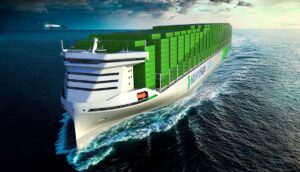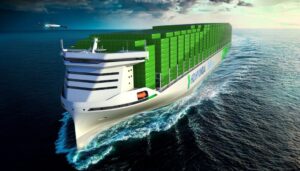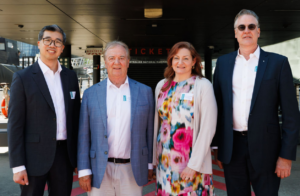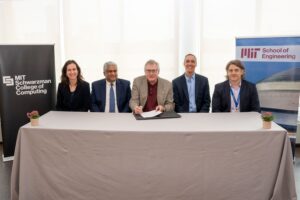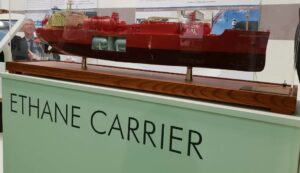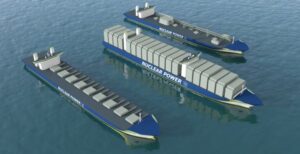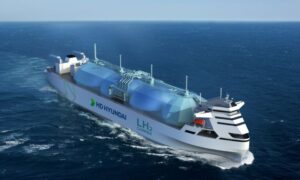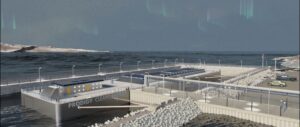HD KSOE, Kepco win ABS’ AiP for floating nuclear power barge
HD Korea Shipbuilding & Offshore Engineering (KSOE) and KEPCO Engineering and Construction Company (KEPCO E&C) have received approval in principle (AiP) from classification society ABS for a new design of a floating offshore nuclear power barge.
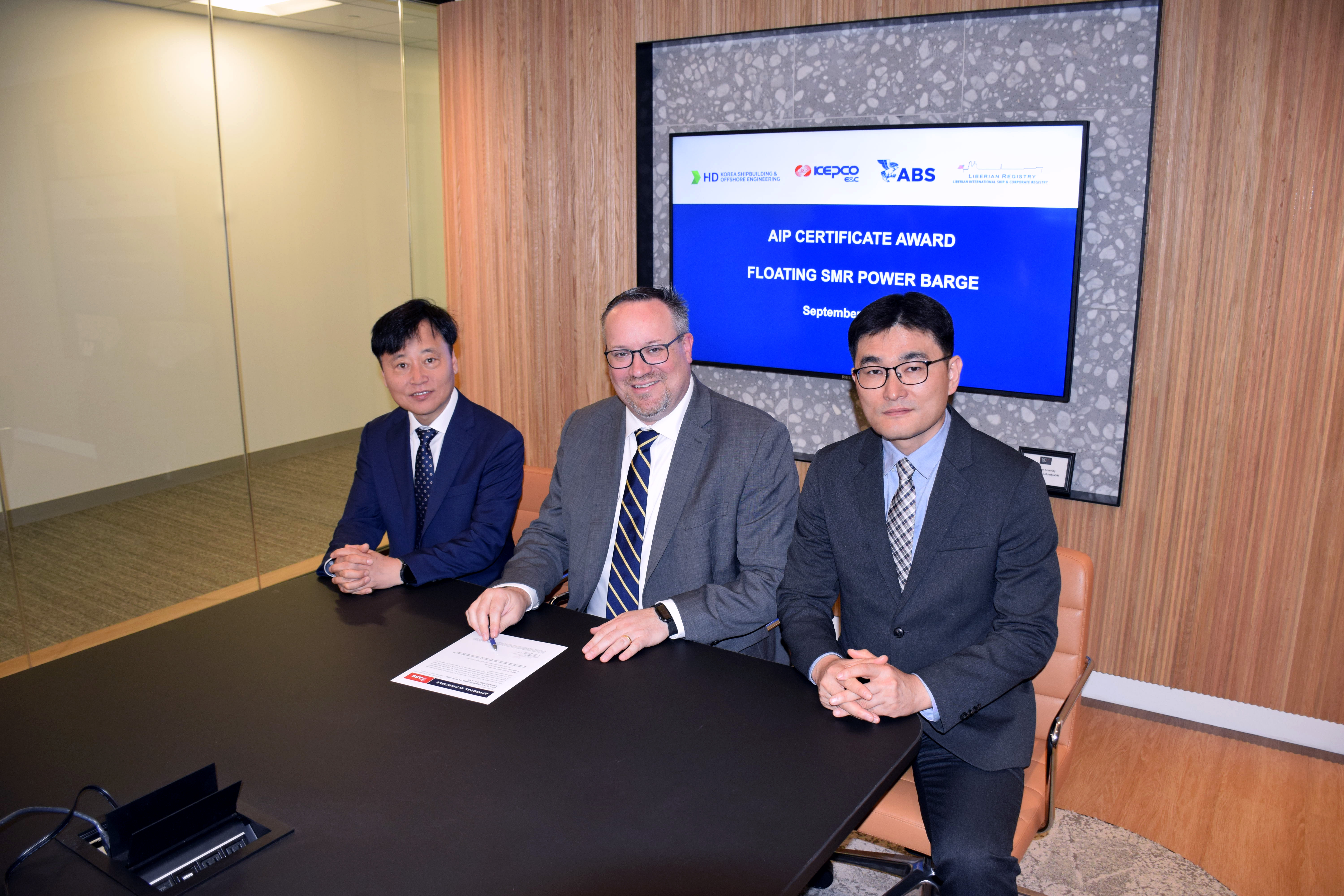
Project collaborators include ABS, HD KSOE, KEPCO E&C and the Liberian International Ship & Corporate Registry (LISCR). Representatives from each company met in Washington, D.C., for the AIP presentation.
The floating small modular reactor (SMR) barge is intended to serve as offshore power generation for remote communities and island electrification.
According to the partners, HD KSOE will provide basic designs for the marine systems; then ABS and LISCR will complete design reviews based on class and statutory requirements. KEPCO E&C will continue to work on risk assessments for future applications.
“Modern nuclear technologies are increasingly suggested as a potential solution to lower carbon emissions. Floating production platforms like this barge from HD KSOE have the possibility to scale more easily than what can be done on land. ABS is proud to apply our research and experience to innovative projects such as this one,” said Patrick Ryan, ABS Senior Vice President and Chief Technology Officer.
“KEPCO E&C developed APR1400 which received design certification from the U.S. NRC in 2019 and has continuously designed more than 30 nuclear power plants at home and abroad over the past 40 years. In addition, we have our own marine SMR, ‘BANDI’, and we are making efforts to develop marine SMR technology as well as onshore SMR. Based on our abundant experience in the nuclear power business and accumulated technology, we will actively contribute to decarbonization for the environment and future generations,” stated Dr. Moon Young-Tae, Senior Director of KEPCO E&C.
“This barge design not only eliminates the inconvenience of selecting onshore sites by being installed at sea but also offers the advantage of an integrated design for thermal energy production. This increases the potential to support the production of eco-friendly ship fuels like ammonia or methanol,” said Dr. Kim Sung-Jun, Director of Future Technology at HD KSOE.
Sung-Jun also revealed that HD KSOE has invested $30 million in the fourth-generation SMR company, TerraPower, and that the company has plans to accelerate the development of future nuclear-powered ships by establishing an SMR research team.
HD KSOE’s design involves a 240 megawatt (MW) SMR-powered ship, featuring four sets of 60-megawatt SMRs. The vessel would be a floating SMR facility on the sea, with the SMR placed on the bottom and a platform on top that produces carbon-free fuel such as hydrogen.
Related Article
-
Report: KSOE reveals design of SMR-powered vessel
Business Developments & Projects
ABS Chairman and Chief Executive Officer Christopher J. Wiernicki has recently welcomed nuclear energy experts, government representatives, academia, and senior maritime industry leaders from around the world for the very well-attended ABS forum, The Role of Advanced Nuclear Technologies in the Maritime Energy Transition in Washington, D.C.
The full-day conference confirmed the potential for advanced nuclear technologies in the maritime domain to provide a game-changing clean energy transition safely with project implementations likely to occur in the next 10 to 12 years.
“We see nuclear energy as an enabler for producing clean energy and clean fuels and as a power source for ship propulsion,” said Wiernicki.
“Modern nuclear and renewable based energy systems extend our line of sight of solutions to achieve net zero by 2050.”
The day before the forum, Wiernicki hosted a congressional briefing on Capitol Hill in coordination with the National Reactor Innovation Center (NRIC) and the bipartisan House Advanced Nuclear Caucus, including introductory comments by caucus members Rep. Chuck Fleischmann (TN-03) and Rep. Byron Donalds (FL-19).
Wiernicki emphasized that turning advanced nuclear technology into a practical reality for the maritime industry is an important tool for helping the maritime industry achieve net zero by 2050 and has the potential to grow economic opportunities and high-tech jobs in the maritime industry.
“Government support is critical. There is a real opportunity right now for forward-thinking governments to drive the agenda with practical projects by providing real applications of advanced nuclear technology in a government controlled and regulated environment. Government applications on dredges, strategic sealift vessels, ice breakers, and research vessels may be a great place to start,” Wiernicki concluded.

